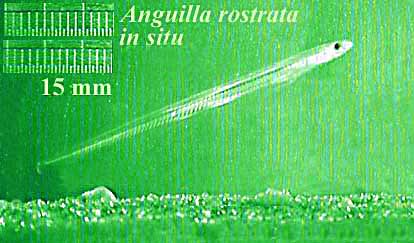Long-term Ecosystem Observatory on:
[Wikipedia]
[Google]
[Amazon]

 The Long-term Ecological Observatory (LEO) is a project off the coast of
The Long-term Ecological Observatory (LEO) is a project off the coast of
"The Long-Term Ecosystem Observatory: An Integrated Coastal Observatory"
''IEEE Journal of Oceanic Engineering'', 27 (2): 146–154. * Wilkin JL, HG Arango, DB Haidvogel CS Lichtenwalner, SM Glenn and KS Hedström (2005
"A regional ocean modeling system for the long-term ecosystem observatory"
''Journal of Geophysical Research'', 110, C06S91. {{doi, 10.1029/2003JC002218
''Underseas Research Program'', NOAA. Updated: November 2, 2005. Retrieved October 8, 2012.
Institute of Marine and Coastal Sciences, Rutgers University
Marine biological stations Observatories Research projects

 The Long-term Ecological Observatory (LEO) is a project off the coast of
The Long-term Ecological Observatory (LEO) is a project off the coast of New Jersey
New Jersey is a state in the Mid-Atlantic and Northeastern regions of the United States. It is bordered on the north and east by the state of New York; on the east, southeast, and south by the Atlantic Ocean; on the west by the Delaware ...
, United States, which monitors the processes in the ocean with online IT systems, spearheaded by the Institute of Marine and Coastal Sciences at Rutgers University
Rutgers University (; RU), officially Rutgers, The State University of New Jersey, is a Public university, public land-grant research university consisting of four campuses in New Jersey. Chartered in 1766, Rutgers was originally called Queen's ...
. Already installed are sensors for temperature, salinity
Salinity () is the saltiness or amount of salt dissolved in a body of water, called saline water (see also soil salinity). It is usually measured in g/L or g/kg (grams of salt per liter/kilogram of water; the latter is dimensionless and equal ...
, transmission
Transmission may refer to:
Medicine, science and technology
* Power transmission
** Electric power transmission
** Propulsion transmission, technology allowing controlled application of power
*** Automatic transmission
*** Manual transmission
*** ...
, light, light attenuation
In physics, attenuation (in some contexts, extinction) is the gradual loss of flux intensity through a medium. For instance, dark glasses attenuate sunlight, lead attenuates X-rays, and water and air attenuate both light and sound at variable att ...
, fluorescence
Fluorescence is the emission of light by a substance that has absorbed light or other electromagnetic radiation. It is a form of luminescence. In most cases, the emitted light has a longer wavelength, and therefore a lower photon energy, tha ...
, pressure and velocity.
With improvements in Internet infrastructure it will be possible to observe and evaluate plankton
Plankton are the diverse collection of organisms found in Hydrosphere, water (or atmosphere, air) that are unable to propel themselves against a Ocean current, current (or wind). The individual organisms constituting plankton are called plankt ...
(like copepod
Copepods (; meaning "oar-feet") are a group of small crustaceans found in nearly every freshwater and saltwater habitat (ecology), habitat. Some species are planktonic (inhabiting sea waters), some are benthos, benthic (living on the ocean floor) ...
s) or juvenile fish (like Atlantic herring
Atlantic herring (''Clupea harengus'') is a herring in the family (biology), family Clupeidae. It is one of the most abundant fish species in the world. Atlantic herrings can be found on both sides of the Atlantic Ocean, congregating in large ...
) online with a quantitative ''in situ'' microscope, known as the ecoSCOPE
The ecoSCOPE is an optical sensor system, deployed from a small remotely operated vehicle ( ROV) or fibre optic cable, to investigate behavior and microdistribution of small organisms in the ocean.
Deployment
Although an ROV may be very small a ...
, in order to get more insight into some of the enigmatic life histories of ocean organisms, like predator–prey interaction
Predation is a biological interaction where one organism, the predator, kills and eats another organism, its prey. It is one of a family of common List of feeding behaviours, feeding behaviours that includes parasitism and micropredation (wh ...
between herring
Herring are forage fish, mostly belonging to the family of Clupeidae.
Herring often move in large schools around fishing banks and near the coast, found particularly in shallow, temperate waters of the North Pacific and North Atlantic Oceans, i ...
and copepod
Copepods (; meaning "oar-feet") are a group of small crustaceans found in nearly every freshwater and saltwater habitat (ecology), habitat. Some species are planktonic (inhabiting sea waters), some are benthos, benthic (living on the ocean floor) ...
s, the Eel story
The eel is a long, thin bony fish of the order Anguilliformes. The species has a catadromous life cycle, that is: at different stages of development migrating between inland waterways and the deep ocean. Because fishermen never caught anything th ...
, or oxygen depletion
Hypoxia refers to low oxygen conditions. Normally, 20.9% of the gas in the atmosphere is oxygen. The partial pressure of oxygen in the atmosphere is 20.9% of the total barometric pressure. In water, oxygen levels are much lower, approximately 7 p ...
.
References
* Schofield O, Bergmann T, Bissett P, Grassle JF, Haidvogel DB, Kohut J, Moline M and Glenn SM (2002"The Long-Term Ecosystem Observatory: An Integrated Coastal Observatory"
''IEEE Journal of Oceanic Engineering'', 27 (2): 146–154. * Wilkin JL, HG Arango, DB Haidvogel CS Lichtenwalner, SM Glenn and KS Hedström (2005
"A regional ocean modeling system for the long-term ecosystem observatory"
''Journal of Geophysical Research'', 110, C06S91. {{doi, 10.1029/2003JC002218
''Underseas Research Program'', NOAA. Updated: November 2, 2005. Retrieved October 8, 2012.
External links
Institute of Marine and Coastal Sciences, Rutgers University
Marine biological stations Observatories Research projects